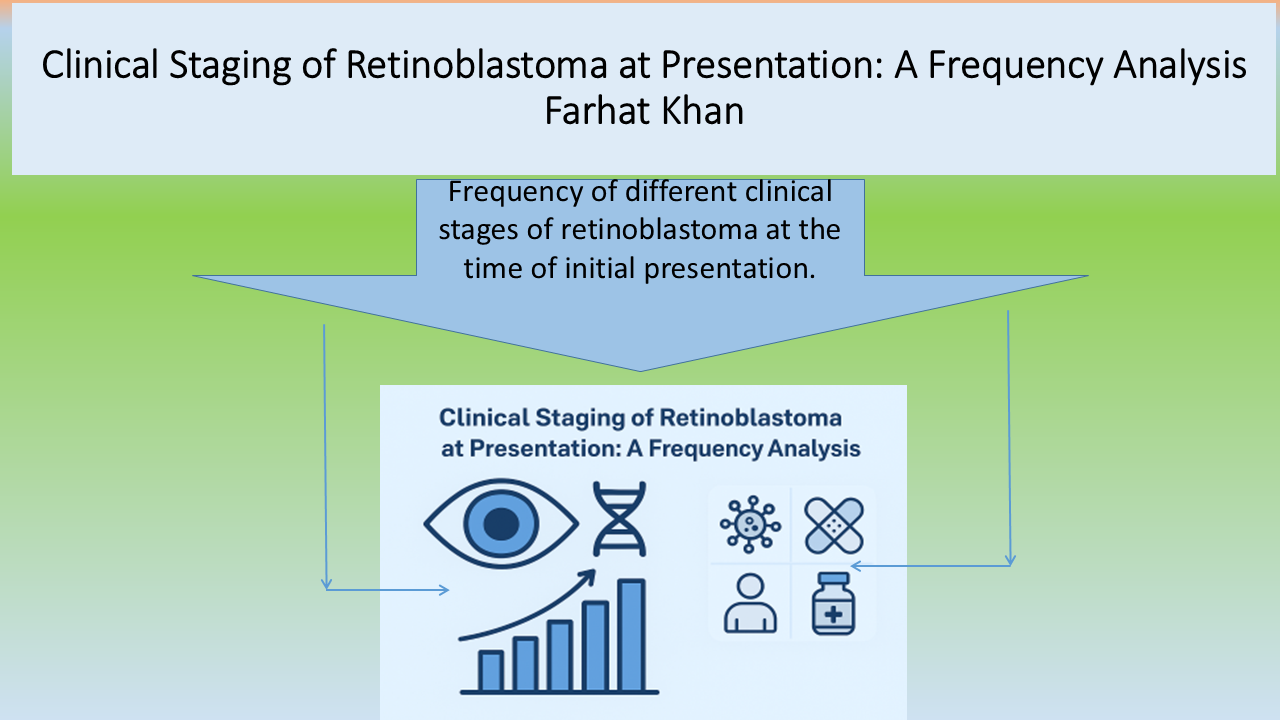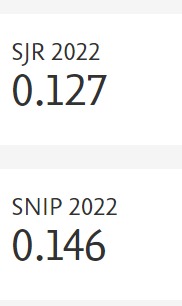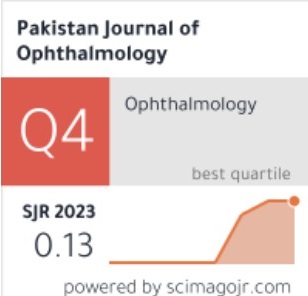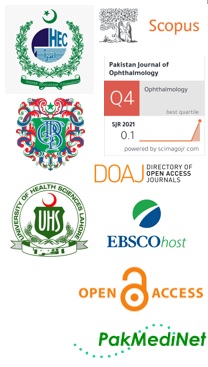Clinical Staging of Retinoblastoma at Presentation: A Frequency Analysis
Doi: 10.36351/pjo.v41i4.2139
DOI:
https://doi.org/10.36351/pjo.v41i4.2139Abstract
Purpose: To determine the frequency of different clinical stages of retinoblastoma at the time of initial presentation.
Study Design: Retrospective study.
Place and Duration of Study: Jinnah Postgraduate Medical Center, Karachi from June 2024 to February 2025.
Methods: Records of patients with confirmed diagnosis of retinoblastoma were reviewed. There were 85 patients who qualified the inclusion criteria. Data included staging of retinoblastoma at presentation using Intraocular Retinoblastoma Classification (IIRC), age at presentation, gender, laterality (unilateral or bilateral) and comprehensive ocular examination details. For patients with bilateral disease, each eye was staged individually, resulting in a total of 114 eyes for analysis. Demographic details such were also retrieved.
Results: Among 85 retinoblastoma patients (114 eyes), the most common stage at presentation was Group D (42.1%) followed by Group E (32.4%). None of the patients had Group A retinoblastoma. Groups B and C were frequent inbilateral cases (32.8%). Mean age at presentation was 2.6±1.4 years, and52.9% were male. Bilateral cases demonstrated a shorter symptom duration (6.7 vs. 9.1 weeks, p = 0.02) and a higher frequency of positive family history (24.1% vs. 3.6%, p = 0.004). No significant association was observed between gender and disease stage.
Conclusion: Most of the retinoblastoma patients presented in advanced stages (Group D and E), indicating delayed diagnosis and referral. These findings highlight the need for increased awareness, early screening, and improved access to specialized ocular oncology services.

Downloads
Published
How to Cite
Issue
Section
License
Copyright (c) 2025 Farhat Khan, Aziz-ur-Rehman, Nimarta, Baby Nisha, Kunza Zahid

This work is licensed under a Creative Commons Attribution-NonCommercial 4.0 International License.






